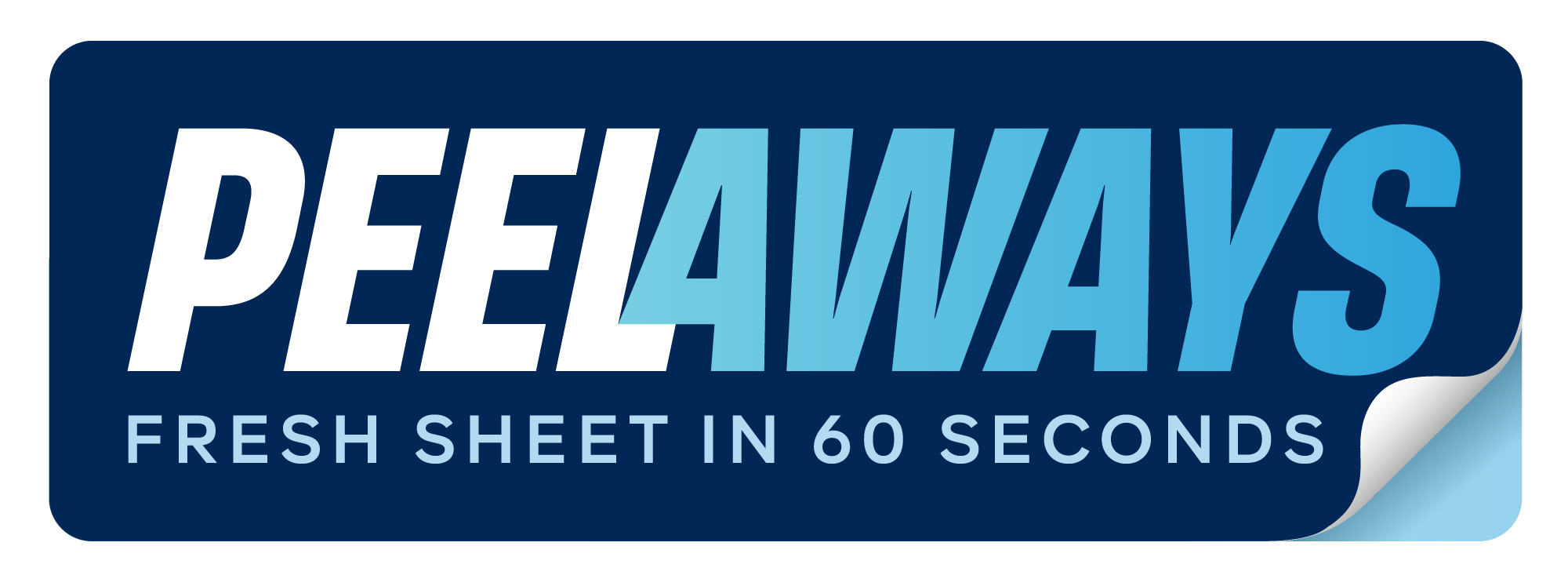5 Barriers to Hand Hygiene in Care Settings

Hand hygiene is critical for preventing infections, yet compliance in healthcare often falls below 50%. Why? Several factors make it challenging for healthcare workers to follow proper protocols, even when they know it's important. Here's a quick breakdown of the five main barriers:
- Time Constraints & Staff Shortages: Packed schedules and understaffing lead to skipped handwashing, especially during emergencies.
- Limited Supplies & Poor Access: Empty soap dispensers, broken sinks, or poorly placed hygiene stations discourage compliance.
- Skin Problems: Frequent washing causes irritation and dryness, making workers less likely to follow hygiene rules.
- Training Gaps: Many workers lack clarity on when and how to wash hands effectively.
- Weak Leadership & Monitoring: Without strong oversight and accountability, compliance rates drop significantly.
Addressing these challenges with practical solutions - like better staffing, accessible supplies, skin-friendly products, education, and leadership support - can drastically reduce infection risks and improve patient outcomes.
Improving hand hygiene – Stories of Care Ep. 17
1. Time Constraints and Staff Shortages
Time pressure is one of the biggest obstacles to proper hand hygiene in healthcare facilities across the United States. When healthcare workers are juggling heavy patient loads and tight schedules, thorough handwashing often gets rushed - or skipped altogether.
The CDC highlights "too busy/insufficient time" and "understaffing/overcrowding" as major reasons for lapses in hand hygiene. High patient-to-staff ratios often make it difficult to dedicate the recommended 20 seconds for proper handwashing[2][4]. Research shows that during busy shifts, hand hygiene is missed in up to 50% of required instances[4]. These issues are further compounded by workforce burnout, which has become increasingly common.
In fact, a 2021 survey revealed that short staffing, high patient ratios, and burnout often push healthcare workers to cut corners on hand hygiene[5]. Emergency situations only amplify the problem. For example, studies in ICU settings and during flu season surges found that rapid patient turnover led nurses to skip handwashing, which contributed to infection outbreaks[1][4].
When healthcare staff are forced to prioritize immediate patient needs over infection control protocols, it puts the entire care environment at greater risk for healthcare-associated infections.
To help ease these challenges, solutions like PeelAways disposable bed sheets can make a difference. These multi-layer sheets allow staff to quickly peel away soiled layers without the need for traditional bed changes or laundry, saving time and reducing the risk of cross-contamination.
Ultimately, addressing time constraints requires systemic changes. Healthcare facilities need to tackle staffing shortages and workload pressures to ensure patient safety remains a top priority.
2. Limited Supplies and Poor Access
When hand hygiene supplies run out or stations are inconveniently located, infection control efforts take a serious hit. Empty soap dispensers, depleted hand sanitizer, or broken sinks make it nearly impossible for even the most diligent healthcare workers to stick to proper protocols.
Key barriers to hand hygiene include the lack of soap, paper towels, and poorly placed sinks, all of which discourage compliance. This isn't just about occasional hiccups - it's an ongoing issue that directly compromises patient safety. Beyond supply availability, the functionality of hand hygiene equipment, like jammed paper towel holders or broken dispensers, adds another layer of difficulty. It's a persistent problem that affects both the availability and usability of essential hygiene infrastructure.
Accessibility is just as critical as having supplies on hand. Even when soap and water are available, if handwashing stations are far from patient care areas, compliance drops. A systematic review spanning 46 studies across 26 countries found that over half of the barriers to proper handwashing stemmed from environmental factors, such as supply shortages and poor infrastructure [3].
The consequences of insufficient supplies are significant. Missed hand hygiene opportunities lead to higher rates of healthcare-associated infections (HAIs), longer hospital stays, increased patient morbidity, and rising costs [4]. Without functional and accessible infrastructure, healthcare workers are unable to meet the standards required to prevent these infections.
Simple changes can make a big impact. For example, one hospital improved hand hygiene compliance and reduced HAIs by relocating and consistently restocking hand sanitizer dispensers at the entrances of patient rooms [4]. Smart placement strategies like this highlight how small adjustments can lead to meaningful results.
When supplies are unreliable, innovative alternatives can help. Products like PeelAways disposable bed sheets offer a practical way to reduce cross-contamination. Their multi-layer, peel-away design allows staff to quickly replace soiled layers without the need for traditional bed changes, minimizing contact with contaminated surfaces.
To tackle these challenges, healthcare facilities should conduct regular supply audits and optimize dispenser placement. Tracking usage patterns, identifying high-traffic areas, and ensuring backup supplies are readily available can go a long way in maintaining proper hand hygiene and improving patient safety.
3. Skin Problems from Frequent Washing
In healthcare settings, maintaining hand hygiene isn't just about time and supplies - it’s also about managing the toll it takes on skin health.
Frequent handwashing can wreak havoc on the skin of healthcare workers, leading to dryness, irritation, redness, cracking, and even dermatitis in up to 85% of cases [2]. These painful conditions often discourage compliance with hygiene protocols. The repeated use of soaps and sanitizers strips away the skin's natural protective oils, leaving hands more prone to irritation and even harboring pathogens [2]. A survey conducted between November 4 and 9, 2021, involving 100 healthcare workers, highlighted skin irritation and dryness as two of the main reasons for not adhering to hand hygiene guidelines [5].
One way to tackle this issue is by introducing skin-friendly products into healthcare routines. Facilities can provide alcohol-based hand rubs that include moisturizers and ensure access to gentle, fragrance-free soaps. Many healthcare organizations have reported noticeable improvements in both skin condition and hygiene compliance after adopting milder formulations [2]. Addressing skin irritation isn't just about comfort - it plays a vital role in infection prevention.
Investing in products like moisturizing lotions, barrier creams, and gentler sanitizers can significantly reduce skin problems and encourage better compliance [2][5]. Additionally, educating staff on methods to minimize skin damage - such as proper handwashing techniques, the importance of regular moisturizing, and promptly reporting skin issues - can enhance both caregiver well-being and patient safety.
Innovative solutions, like PeelAways disposable bed sheets, also contribute to skin-friendly practices. These sheets allow staff to change soiled bedding with minimal contact, reducing exposure to contaminants that could require additional handwashing. This not only protects skin but also reinforces broader infection control efforts.
sbb-itb-45288fe
4. Poor Training and Knowledge Gaps
Gaps in knowledge among healthcare workers often stand in the way of proper hand hygiene compliance. Many staff members are unclear about critical moments for hand hygiene, such as before and after patient contact, after removing gloves, and following exposure to bodily fluids [1]. This uncertainty also extends to the correct techniques for maintaining hand hygiene.
For example, workers sometimes confuse the roles of soap and hand sanitizer, not realizing that improper practices can lead to serious risks like healthcare-associated infections, antibiotic resistance, and extended hospital stays [1][6].
High staff turnover and demanding workloads further complicate the issue. New employees often miss out on thorough orientation, leaving them unaware of facility-specific protocols. A common misconception, for instance, is that wearing gloves eliminates the need for hand hygiene [1][6].
Addressing these challenges requires ongoing education that not only explains proper techniques but also emphasizes the reasons behind them. Effective solutions include real-time feedback systems, interactive training modules, and visual reminders. Training should cover key topics like when to use gloves and how to apply hand sanitizer correctly [4].
5. Weak Leadership and No Monitoring
When it comes to improving hand hygiene compliance, the role of leadership cannot be overstated. Beyond training staff and providing supplies, the quality of leadership plays a key role in driving success. Without strong leadership, even the best policies can fall flat.
Weak leadership often shows itself in several ways: managers who fail to visibly commit to hand hygiene, inadequate funding for hygiene programs, and leaders who don’t lead by example. When staff see that leadership isn’t fully invested, they may assume hand hygiene isn’t a real priority, regardless of written policies.
Equally concerning is the lack of effective monitoring systems. Without consistent oversight and feedback, lapses in hand hygiene can go unnoticed, leading to a decline in compliance. Research indicates that facilities with engaged leadership and reliable monitoring systems can achieve compliance rates exceeding 80%. In contrast, compliance can drop to as low as 40% in environments where these elements are missing [2].
A compelling example comes from a major U.S. hospital system in 2023. By implementing SwipeSense monitoring technology, they boosted hand hygiene compliance from 62% to 85% in just six months [4]. Tools like electronic monitoring devices, badge-based sensors, and direct observation systems are becoming more common for tracking compliance. However, technology alone isn’t a silver bullet. Leadership must act on the data these tools provide, enforce accountability, and ensure feedback leads to meaningful change.
The stakes are high. Weak leadership and poor monitoring don’t just lower compliance rates - they contribute to higher infection rates, longer patient stays, increased costs, and even reputational harm.
To create lasting improvement, leadership must champion hand hygiene as a core value. This means integrating it into the workplace culture, providing regular feedback, and transparently reporting compliance data. Recognizing high-performing teams can also motivate staff and encourage accountability. When leaders take hand hygiene seriously and back it with effective monitoring, they create a safer environment for both patients and healthcare workers.
Innovative solutions can further support these efforts. For instance, PeelAways disposable, multi-layer bed sheets offer a quick and hygienic way to reduce cross-contamination. By allowing easy sheet changes without lifting patients or relying on laundering, such products complement robust hand hygiene programs and strengthen overall infection control measures.
Comparison Table
Below is a detailed breakdown of key barriers affecting patient care and practical solutions to overcome them. This table combines the main challenges and actionable strategies discussed earlier.
| Barrier | Main Effects on Patient Care | Practical Solutions |
|---|---|---|
| Time Constraints & Staff Shortages | Missed hand hygiene opportunities during busy shifts; increased risk of cross-contamination; higher rates of healthcare-associated infections | Install alcohol-based hand rub dispensers at every point of care; integrate hand hygiene into routine workflows; increase staffing during peak hours to reduce pressure on existing staff |
| Limited Supplies & Poor Access | Supply shortages lead to inconsistent compliance; staff may skip handwashing when sinks are inconveniently located; 20–40% of staff cite supply issues as a barrier [2] | Place hand hygiene stations strategically throughout the facility; ensure consistent restocking; provide pocket-sized sanitizers for mobile staff |
| Skin Problems from Frequent Washing | Up to 30% of healthcare workers avoid hand hygiene due to skin irritation [2], increasing infection risks and over-reliance on gloves [1] | Use gentle, moisturizing hand hygiene products; offer barrier creams and skin care education; conduct regular skin health assessments for staff |
| Poor Training & Knowledge Gaps | Incorrect techniques reduce hand hygiene effectiveness; critical handwashing moments are missed; preventable infections lead to longer hospital stays | Conduct ongoing education programs with competency checks; use visual reminders like posters; offer multidisciplinary training sessions to reinforce best practices |
| Weak Leadership & No Monitoring | Compliance rates can drop to as low as 40% without proper oversight [2]; lack of accountability encourages non-compliance; higher patient mortality risk from infections | Establish monitoring systems led by leadership; provide regular feedback on compliance data; implement accountability measures with transparent reporting |
Addressing multiple barriers at once tends to yield the best results. Facilities that adopt a multimodal approach - combining these strategies - often see significant improvements in hand hygiene compliance and patient outcomes.
For example, products like PeelAways disposable bed sheets can help reduce bed change time and minimize cross-contamination, freeing up staff to focus more on hygiene practices. Tackling several challenges together fosters a stronger culture of hand hygiene and ensures lasting improvements [2].
Conclusion
Hand hygiene is one of the simplest and most effective ways to prevent healthcare-associated infections, yet compliance often falls below 50% without focused interventions[4][2]. To protect patient safety, care facilities must tackle challenges like time constraints, supply shortages, skin irritation, training gaps, and weak leadership.
These obstacles aren't just operational issues - they pose real risks to patients. Every day, healthcare-associated infections impact 1 in 31 hospital patients in the U.S.[2].
Because these challenges are interconnected, addressing them requires a well-rounded strategy. For instance, limited supplies can increase time pressures, and frequent handwashing may lead to skin irritation, discouraging proper hygiene when it's needed most. Similarly, insufficient training leaves caregivers unprepared, and without strong leadership or consistent monitoring, even well-intentioned programs can falter over time.
Facilities that take a multi-faceted approach see real results. By combining solutions - such as placing hand hygiene stations in key locations, offering skin-friendly products, providing ongoing education, and implementing clear monitoring systems - care settings can improve both compliance and patient outcomes[4][1]. During the COVID-19 pandemic, facilities that prioritized education and consistent reminders maintained higher compliance, proving the value of sustained efforts[1].
It takes commitment at every level to overcome these barriers, from frontline caregivers to top leadership. Products like PeelAways disposable bed sheets contribute to this mission by reducing cross-contamination risks and giving staff more time to focus on hygiene.
FAQs
How can healthcare facilities address time constraints and staffing shortages to improve hand hygiene compliance?
Time pressures and limited staffing are everyday hurdles in healthcare, but there are actionable ways to boost hand hygiene compliance. One effective approach is making hygiene supplies - like hand sanitizers and soap dispensers - easily accessible in high-traffic or critical areas. This simple step ensures that staff can clean their hands quickly without disrupting their workflow.
Regular training sessions and gentle reminders can also reinforce the importance of hand hygiene, even during the busiest shifts. When hygiene becomes second nature, it’s easier to maintain high standards without feeling overwhelmed.
Another helpful tactic is incorporating disposable, multi-layered products into daily routines. These products not only cut down on cleaning and laundry time but also help reduce the risk of cross-contamination. By simplifying processes, caregivers can dedicate more energy to patient care while still meeting hygiene requirements.
What can healthcare workers do to prevent skin irritation from frequent handwashing while following hygiene protocols?
Frequent handwashing is a must in care settings, but it often comes with a downside: dry, irritated skin. To help prevent this, healthcare workers can opt for gentle, fragrance-free soaps and follow up with moisturizers right after washing to seal in hydration. Using gloves when necessary and steering clear of overly hot water are also simple ways to protect the skin.
On another note, tools like Peelaways disposable bed sheets can make tasks like changing beds much easier. These sheets not only cut down on physical effort but also reduce exposure to soiled materials, helping caregivers maintain hygiene while saving time. This allows them to focus more on providing quality care to patients.
How can leaders effectively promote better hand hygiene compliance among staff in care settings?
Leaders have a crucial role in shaping a workplace culture that prioritizes proper hand hygiene. By clearly communicating expectations, they can motivate their teams to stay committed to hygiene practices, which directly impacts patient safety.
Some practical ways to achieve this include conducting regular audits to track compliance, offering constructive feedback to address gaps, and acknowledging team members who consistently adhere to hygiene protocols. Celebrating these efforts not only lifts morale but also strengthens a sense of accountability throughout the team.
Related Blog Posts
- 7 Tips for Preventing Skin Irritation from Incontinence
- How Disposable Sheets Reduce Cross-Contamination
- Best Certification Programs for Incontinence Care Training
- Reducing Pathogen Spread: Cleaning Protocols Explained
Comments
0

SAVE MONEY & WATER
Professionals & Institutions save a fortune on labor/laundry.

SUPERIOR COMFORT
The first thing our customers notice is how soft our sheets are.

100% WATERPROOF
Each layer is 100% Waterproof, perfect for spills and accidents

SAVE TIME
Change the sheet in under 1 minute without stripping the bed.




Leave a comment